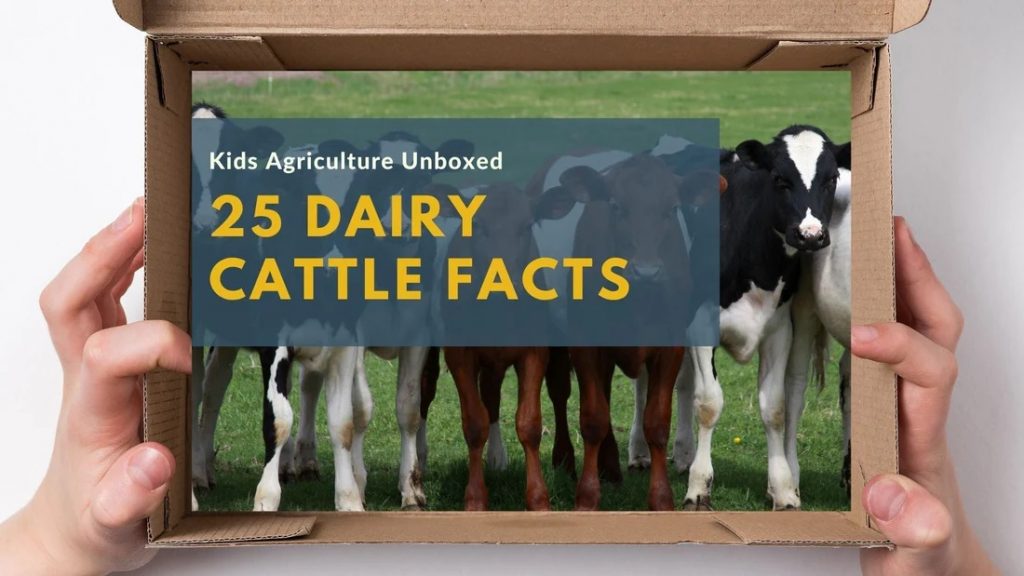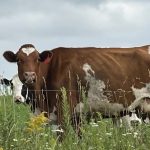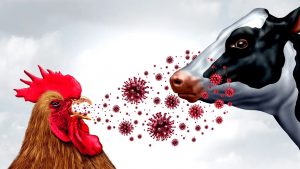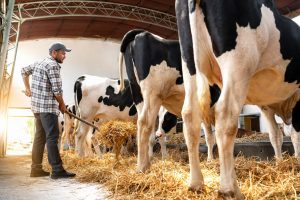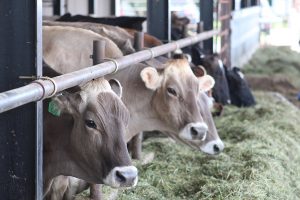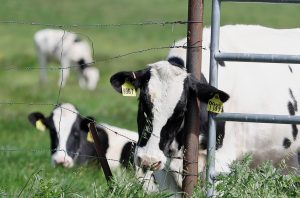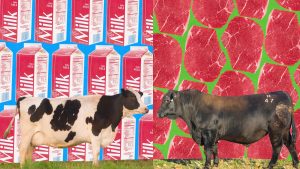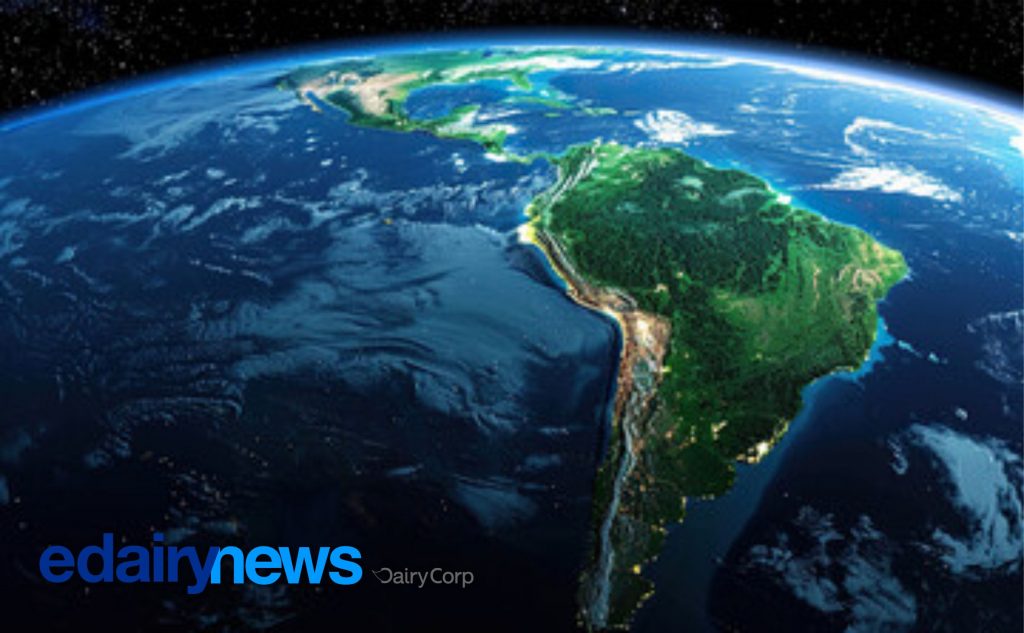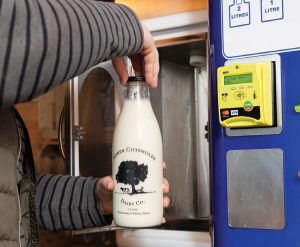
Dairy cattle are essential to the U.S. agricultural landscape, providing the milk that makes up a variety of products like cheese, butter, yogurt, and ice cream.
Whether you’re a seasoned farmer, educator, or simply interested in learning more about these incredible animals, dairy cattle have some fascinating facts that can deepen your understanding. These cows are not only hardworking but also have a significant impact on both the economy and our food systems. Here are 25 fun and insightful facts about dairy cattle and the U.S. dairy industry.
-
The U.S. Dairy Industry Is One of the Largest in the World
The U.S. is the largest producer of milk globally, with over 200 billion pounds of milk produced annually. This production comes from over 9 million dairy cows across the country, contributing significantly to both the economy and the global dairy market. -
Dairy Cattle Are Known for Their Large Milk Production
A typical dairy cow can produce 8-10 gallons of milk per day, depending on breed, diet, and care. This production is a result of careful management, including ensuring cows have the right nutrients, water, and rest to keep them healthy and productive. -
The U.S. Has Over 9 Million Dairy Cows
The U.S. dairy herd consists of more than 9 million cows, and this number can fluctuate based on market demand and farming practices. Major dairy-producing states include California, Wisconsin, and New York, where the cows are raised in a variety of environments from small family farms to large-scale operations.
Dairy Cattle Can Live Up to 15 Years
While most dairy cows are retired from milk production by the age of 6, they can live up to 12-15 years with proper care. Some cows are kept as breeding animals or for other agricultural purposes, contributing to the longevity of their presence on farms.
Dairy Cows Are Fed a Special Diet for Maximum Milk Production
Dairy cows are given a carefully balanced diet that includes hay, silage, grains, and specially formulated nutrients to optimize their milk production. Farmers closely monitor their feed intake, ensuring that each cow receives the nutrients she needs for both health and milk yield.
Holstein Cows Are the Most Common Dairy Breed
Holsteins are the most popular breed of dairy cattle in the U.S. due to their ability to produce high volumes of milk. Their black-and-white markings make them easy to spot, and their dairy production capabilities are unparalleled among other breeds.
Dairy Cattle Are Ruminants
As ruminants, dairy cows have a specialized digestive system consisting of four stomach chambers—rumen, reticulum, omasum, and abomasum—that allow them to digest fibrous plant material like grass and convert it into nutritious milk. This unique system helps cows extract the most nutrients from their food.
Milk Production Is a Year-Round Process
Dairy cows produce milk year-round, unlike some agricultural products that are seasonal. This continuous process requires careful management of cow health, feeding schedules, and milking practices to maintain a steady milk supply. Even though milking takes place year-round, each cow typically undergoes a short dry period after giving birth, allowing her to rest before starting the next lactation cycle.
Dairy Cows Are Often Milked Twice a Day
Most dairy cows are milked twice daily, with milking sessions usually occurring in the early morning and late afternoon. On some farms, cows may be milked more frequently using automated milking systems to increase production or maintain cow health.
Dairy Cattle Can Produce Milk for Years
Once a dairy cow begins lactating, she can continue to produce milk for about 10 months after giving birth. After this, cows have a dry period before giving birth again, at which point they start lactating once more.
The U.S. Dairy Industry Provides Thousands of Jobs
The dairy industry provides employment to over 3 million people, including dairy farmers, farm workers, truck drivers, milk processors, and marketing professionals. This large workforce supports both the production and distribution of dairy products across the U.S. and around the world.
There Are Over 30,000 Dairy Farms in the U.S.
While the number of dairy farms in the U.S. has decreased over time due to consolidation, there are still over 30,000 dairy farms across the country. These farms vary in size, with most being family-owned, and they provide a significant portion of the nation’s milk supply.
Dairy Cows Have Excellent Hearing
Dairy cows can hear a wide range of sounds, from low-frequency rumbles to higher-pitched noises. This sensitivity makes them highly attuned to their environment, and many dairy farms play calming music or sounds to help reduce stress and increase milk production.
Cattle Produce More Than Just Milk
In addition to milk, dairy cattle provide a range of byproducts, such as cheese, butter, yogurt, and ice cream. These products are enjoyed worldwide, making dairy a vital component of both the agricultural and food industries.
Dairy Cows Have a Strong Sense of Smell
Cattle rely on their sense of smell to detect changes in their environment, find food, and communicate with each other. They can pick up on scents from miles away, making this sense vital for their survival and well-being.
California Leads U.S. Dairy Production
California produces more milk than any other state in the U.S., accounting for about 20% of the nation’s total milk supply. This makes California the heart of the U.S. dairy industry, with both large-scale operations and innovative farming techniques.
Dairy Farms Have Changed Over Time
Modern dairy farms use advanced technology such as robotic milking machines, automated feeding systems, and cooling systems to improve efficiency and animal comfort. These innovations help farmers manage their operations more effectively while also maintaining the health of their herds.
A Dairy Cow’s Daily Diet Can Include Up to 100 Pounds of Food
A dairy cow consumes up to 100 pounds of food every day to maintain milk production. This diet typically includes hay, silage, grains, and supplements to ensure she gets the necessary vitamins and minerals for both her health and milk yield.
Cows Have a Unique Way of Communicating
Dairy cows communicate through vocalizations, body language, and scent. They may moo to express hunger, discomfort, or to call to their herd mates, and they use tail movements or postures to communicate feelings of aggression or submission.
Dairy Cattle Are Gentle and Social
Dairy cows are generally calm and social animals, often forming strong bonds with other cattle in their herd. They enjoy companionship, and it’s not uncommon to see them grazing or resting together in tight-knit groups.
Cows Can Be Trained to Do Simple Tasks
Dairy cows are surprisingly intelligent and can be trained to follow specific routines. For example, cows can be trained to walk into milking parlors at set times or respond to certain sounds, which can help farmers streamline their operations.
The U.S. Dairy Industry Is More Sustainable Than Ever
Thanks to improvements in farming practices, the dairy industry in the U.S. has significantly reduced its environmental impact. From reducing greenhouse gas emissions to improving water use efficiency, modern dairy farming practices are helping make the industry more sustainable.
Cows Are Not Milked During Late Gestation
Dairy cows are removed from milk production 45 to 65 days before giving birth, typically taking a break called a dry period. Once they give birth, they begin lactating again and are reintroduced to milking routines. This break is essential for cow health and milk quality. Heifers do not produce milk until after the birth of their first calf. From then on they are referred to cows.
The U.S. Dairy Industry Has a Huge Economic Impact
The dairy industry contributes over $600 billion to the U.S. economy every year. Beyond milk sales, dairy products like cheese and butter generate substantial revenue and create jobs in farming, production, and retail.
Dairy Cattle Teach Us About Sustainability and Agriculture
Dairy cattle are at the forefront of agricultural education, showing how modern farming can be both productive and sustainable. By learning about dairy cows, we gain insight into how farming practices impact the environment, animal welfare, and food systems.
Dairy cattle are far more than just milk producers; they are vital to the agricultural industry and provide a wide range of products that impact the global food supply. From their impressive milk production to their role in sustainability, dairy cows are an essential part of both farming and our everyday lives. Understanding these fun facts not only deepens our appreciation for these animals but also highlights the importance of responsible dairy farming in a rapidly changing world.
You can now read the most important #news on #eDairyNews #Whatsapp channels!!!
🇺🇸 eDairy News INGLÊS: https://whatsapp.com/channel/0029VaKsjzGDTkJyIN6hcP1K
